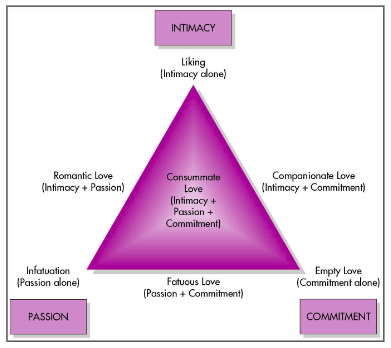psyc 304: chapter 11: interpersonal attraction
1/24
There's no tags or description
Looks like no tags are added yet.
Name | Mastery | Learn | Test | Matching | Spaced |
|---|
No study sessions yet.
25 Terms
why do we have a need to belong?
we are obsessed wth relationships (social media, tv - the bachelor)
the need to belong refers to our motivation to develop and cultivate relationship with others
factors that affect our need to belong
level of stress, fear, or pain
introversion/extroversion
loneliness
refers to a negative emotional state resulting from the perceived inadequacy of one’s social network
the young and the old are more susceptible to depression
is it the quality or the quantity of relationships that matter most?
ostracism
occurs when an individual or group is ignored or excluded by another invidual group
two responses to ostracism
reflexive (anxiety) and responsive (coping strategy)
five coping strategies of ostracism
fight, flight (leave), tend (attempt to repair existing relationship), befriend (establish new relationships in replacement), and freeze (shut down/isolate)
why do i like this person, but not that person?
proximity, mere exposure, reciprocity, similarity (two stage model of attraction; matching hypothesis), and physical attractiveness (facial symmetry, the golden ratio (.70), and the V - broad shoulders)
evolutionary perspective on attraction
eggs are expensive and sperm are cheap
humans prefer mate selection strategies that increase the odds of successfully producing and raising healthy offspring
women prefer older and high status mates
men prefer younger and more attractive mates
mate poaching
refers to the pursuit of a person who is already in a romantic relationship
myth of monogamy
initial studies that investigated whether men or women were more likely to engage in mate poaching produced mixed results
Parker & Burkley (2009) found single women were more prone to engage in mate poaching than were men
intimate relationships often involve three basic components:
feelings of attachment, affection, and love
fulfillment of psychological needs
interdependence between partners, each of whom has a meaningful influence on the other
how do first encounters evolve into intimate relationships
by stages or by leaps or bounds? probs both
how do intimate relationships change?
most researchers reject idea that intimate relationships progress through a fixed sequence of stages
for reward theories of love, quantity counts
there are qualitative differences between liking and loving, as well as different forms of love
the intimate marketplace: social exchange theory
people are motivated to maximize benefits and minimize costs in their relationships with others
relationships that provide more rewards and fewer costs will be more satisfying and endure longer
the development of an intimate relationship is associated with the overall level of rewards
relationship expectations
comparison level (C): average expected outcome in relationships
comparison level for alternatives (CLalt): expectations of what would receive in an alternative situation
investments in relationship increase commitment
relational building blocks: what leads to satisfaction?
rewards - costs - comparison level (CL)
relational building blocks: what leads to commitment?
satisfaction - CLalt + investments
the intimate marketplace: equity theory
most content with a relationship when the ratio between the benefits and contributions is similar for both partners
your benefits / your contributions = partner’s benefits / partner’s contributions
balance is what counts
exchange relationships:
participants expect and desire strict reciprocity in their interactions
communal relationships:
participants expect and desire mutual responsiveness to each other’s needs
sternberg’s triangular theory of love

intimacy (liking) > companionate love (intimacy + commitment) > fatuous love (passion + commitment) > passion (infatuation) > romantic love (intimacy + passion) = consummate love (intimacy + passion + commitment)
rubin (1973)
liking: the type of feeling one has for a platonic friend
loving: the kind of feeling one has for a romantic partner
hatfield et al. (1988)
passionate love: romantic love characterized by high arousal, intense attraction, and fear of rejection
companionate love: a secure, trusting, stable partnership
passionate love requires:
heightened state of physiological arousal and
the belief that this arousal was triggered by the beloved person
excitation transfer:
people sometimes misattribute physiological arousal to passionate love
companionate love: the self-disclosure in it
form of affection found between close friends as well as lovers
less intense than passionate love
some respects it is deeper and more enduring
characterized by high levels of self-disclosure
the more emotionally involved, the more self-disclosure
theory of social penetration
the development of a relationship happens in levels: superficial level (beginning), intimate (developing), and very intimate level (close)